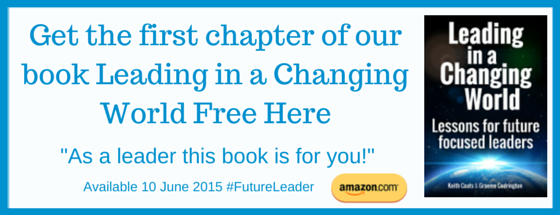 The statistics and our own research conclusively points to the fact that ‘how to’ headlines, titles and literature sells. (This being the case any article with not one but two ‘how to’s’ in the title ought to be a complete winner!)‘How to do this’ and ‘how to do that’ dominates leadership literature and has permeated almost every aspect of what it means to lead: from team meetings to strategy; from keynotes to motivation…there is simply no aspect of leadership that doesn’t come packed in some form of ‘how to’ package. Easy to read, easy to implement and results assured.
The statistics and our own research conclusively points to the fact that ‘how to’ headlines, titles and literature sells. (This being the case any article with not one but two ‘how to’s’ in the title ought to be a complete winner!)‘How to do this’ and ‘how to do that’ dominates leadership literature and has permeated almost every aspect of what it means to lead: from team meetings to strategy; from keynotes to motivation…there is simply no aspect of leadership that doesn’t come packed in some form of ‘how to’ package. Easy to read, easy to implement and results assured.
Simple.
‘Well, what is wrong with that?’ you may be asking. In a time-pressurized world where results are demanded, a comprehensive ‘how to’ is of real value and is a tremendous help to busy, stressed leaders. ‘How to’ offers an executive summary approach to the multiple challenges faced and is both a pragmatic and practical solution for busy and tired leaders. Surely that is a good thing?
But, there is a problem.
Whilst there is a place for a ‘how to’ approach to specific challenges, it is the overbearing saturation of this approach that has bred the problem. The problem is always looking and expecting quick fix solutions to leadership (and personal) challenges that demand a different approach in the quest for meaningful solutions and ways forward. The problem is a laziness in both thinking and behaviour that is cultivated and developed as a result of a constant diet of ‘how to’ solutions and the expectation of a ‘ready-made’ answer. The problem is that the ‘how to’ solution provides a ready-made excuse when things don’t work out as expected and blame needs to be apportioned.
The current context for leadership is unprecedentedly complex. This isn’t to say that past challenges weren’t complex but in today’s ubiquitously changing world, a world connected as never before, the leadership challenge is unlike anything we have ever known or experienced. In his book, The Future, Al Gore writes, ‘There is no prior period that remotely resembles what humanity is about to experience’. Gore’s opinion provides a clear signpost to the emerging reality that leadership complexity is only going to accelerate.
In this often-confusing context it is all too easy, and perhaps understandable, for leaders to reach despairingly for help, any help, close to hand. And it is here that the ‘how to’ literature provides a measure of relief and comfort to leaders needing answers and immediate help. However, more often than not, the ‘how to’ approach merely provides a plaster to the issue or challenge being experienced. The ‘how to’ solution is enticing as it is simplistic and leaders all too often reach for this rather than do the real work required.
So, what exactly then is that ‘real work’?
Meg Wheatley has said that, ‘thinking is the place where all intelligent action starts’. The ‘real work’ is to step back, to pause, to stop, to ask, to reflect, to review, to take some time. The real work is the exact work that most leaders will tell you they are too busy to do. The real work is to rethink, to challenge assumptions and to experiment, inherent in which is the risk of failure. The real work involves the willingness to disrupt one’s own viewpoint in order to find another way to see things.
That is the ‘real work’. That is the response required in a leadership world filled with challenges unlike anything that has previously been encountered. The reaching for a ‘how to’ manual distracts and erodes the real work required. Leaders serious about leadership ought to be reading philosophy, anthropology, history, novels and biographies. Leaders serious about leadership should be observing what is really happening; should be curious and willing to constantly step outside of their comfort zone. Leaders serious about leadership should disenthrall themselves from past successes and formulae that have worked and be as committed to unlearning as they should be to learning. Leaders serious about leadership need to understand that what it takes to lead successfully into the future has shifted on multiple levels. Strategic readiness is something that is needed throughout the organisation; an appreciation that culture is more important that strategy really needs to be understood as something more that a cliché and this understanding needs to be acted on; the realization that leaders are no longer in control of the conversation needs to be acknowledged and taken to heart. Things have certainly changed and much of today’s leadership thinking and practice has failed to keep pace with these changes.
A good starting point for you as a leader would be to embrace what Brian Grazer calls ‘curiosity conversations’ in his wonderful book, A Curious Mind – The Secret to a Bigger Life. Grazer is a renowned Hollywood movie producer who formed a company Imagine Entertainment with Ron Howard, producing hits such as Apollo 13, The Da Vinci Code, Frost / Nixon, Backdraft and the Oscar-winning, A Beautiful Mind. Grazer has embraced a lifetime of intentional curiosity and storytelling. He went about seeking out people both inside and outside of his industry with whom he could have ‘curiosity conversations’. These were busy people, as was he, and yet somehow with the right approach and intent, conversation after conversation took place providing a never-ending source of inspiration, learning and wisdom. Albert Einstein once said, “I have no special talents. I am only passionately curious” and whilst that might be a touch understated, the point is taken.
For any leader keen to try such an approach, Grazer offers two useful insights as you embark on ‘curiosity conversations’. Firstly, for it to be effective the ability to pay attention to what is being said – to the answers to your questions, is vital. You have to absorb whatever it is you’re being curious about. Secondly, there has to be the willingness to act. At some point curiosity will demand action and will require hard work.
In our current leadership approach there is an inbuilt bias against curiosity. It can be spoken about but in reality there is little room to act on curiosity. How we measure, what we measure and why we measure is all designed to keep curiosity at bay. Certainty is king and we usually work off the assumption of what we are doing is ‘right’ rather than what we are doing may be ‘wrong’. Challenging the status quo and embracing disruption are normally not welcomed, in spite of what we might say to the contrary. After all, how many companies can point to ‘curiosity’ as being one of their listed values? Left to describe an object as ‘curious’ it implies something out of the ordinary, an oddity, something strange, something that is not the thing to be doing, asking or saying. This we need to change.
So, as a leader in facing the undoubted challenges that surround you, be less inclined to reach for a ‘how to’ than to initiate a ‘curiosity conversation’. I suspect that in reality there is room for both and even a need for both. My concern is the overwhelming dominance of one over the other and I cannot shake the thought that somehow in this instance the road less travelled, is ultimately a road to a more effective and richer leadership practice than might at first appear obvious.
Here would be some immediate steps and reflections to assist you as you embark on this journey:
- Make a list of people with whom you can schedule curiosity conversations. The list should be both diverse and ambitious. (My list includes a big wave surfer, a VIP bodyguard, a Hollywood Director, a heart-transplant recipient, a Nigerian Storyteller, an astronaut, a police commissioner, a Futurist, a centurion, a former national cricket captain and the CEO of a multinational.)
- What are some of the questions you will ask? Others will emerge but what, by chatting to those on your list, would you hope to learn?
- Pause for a moment and consider this: How easy is this for you? What does it reveal about your willingness to learn, to ask questions and demonstrate curiosity? What does this reveal about your leadership mind-set and practice?
- What might happen if you insisted on your team doing the same? How might this impact on your team / organisational culture?
- Purchase and read A Curious Mind by Brian Grazer and Charles Fishman (Simon & Schuster eBook).



